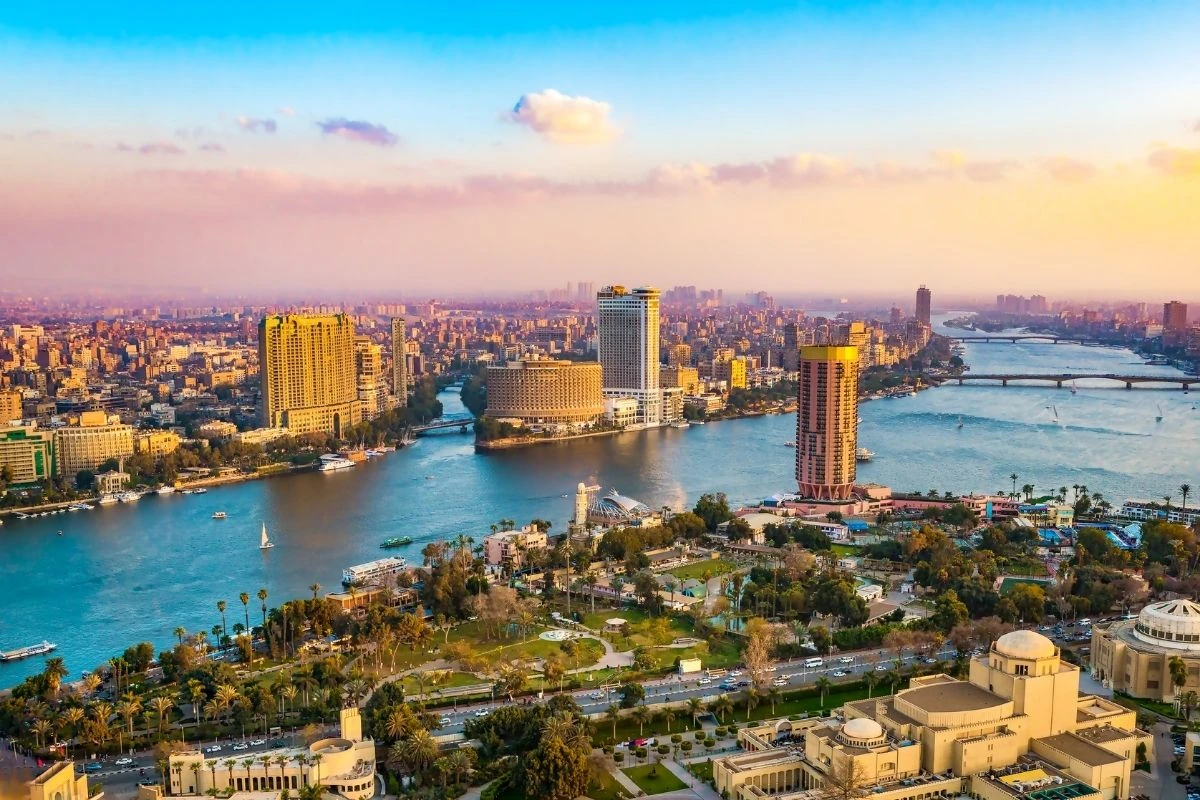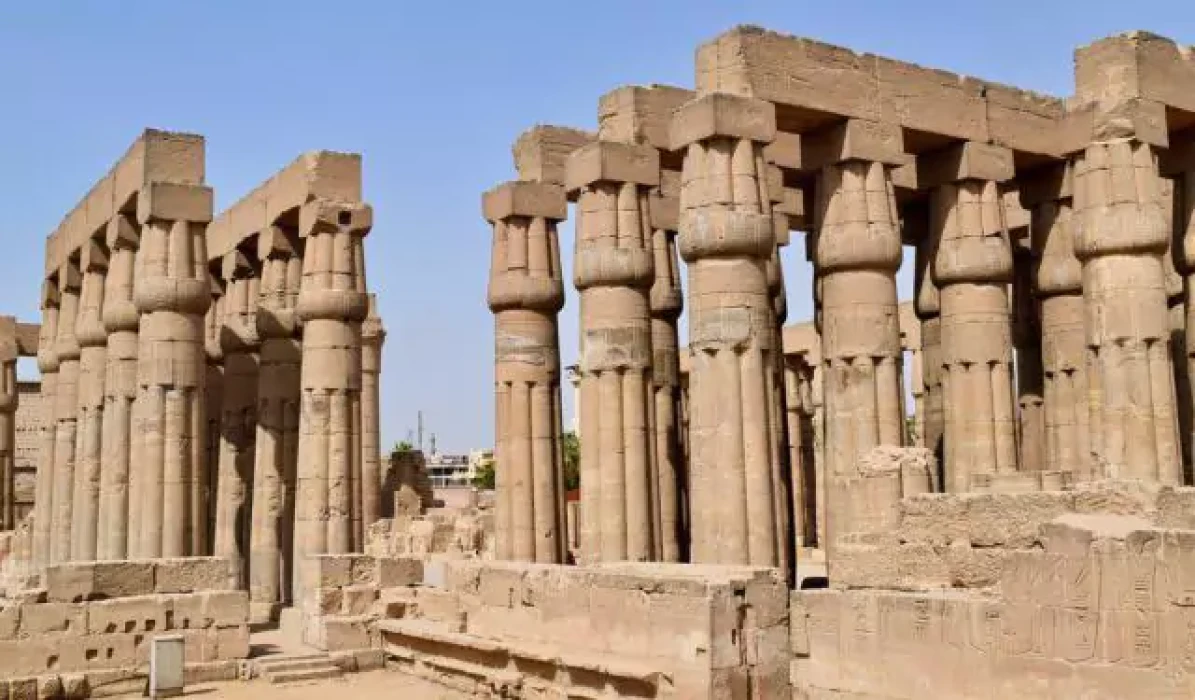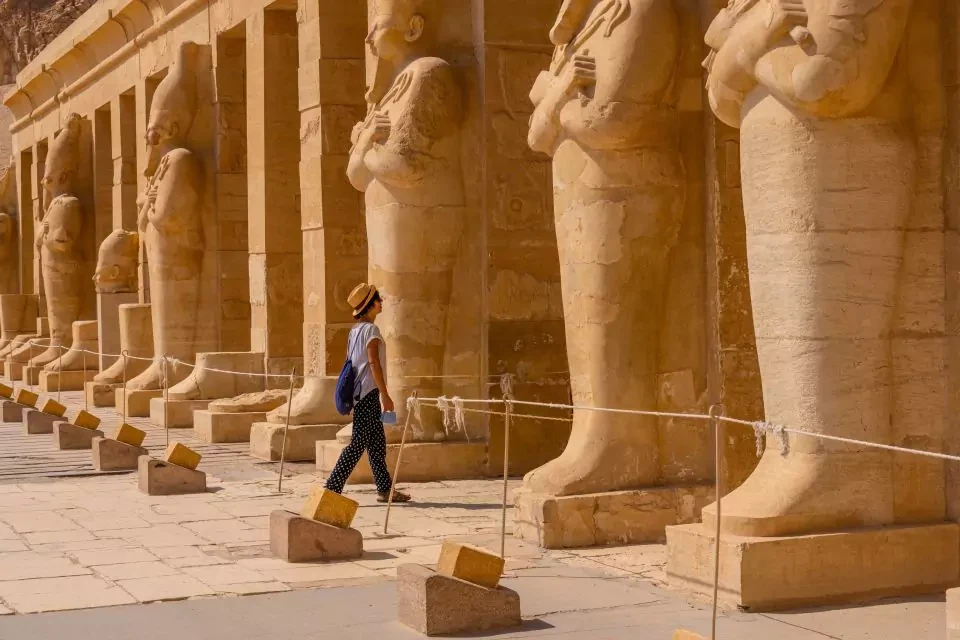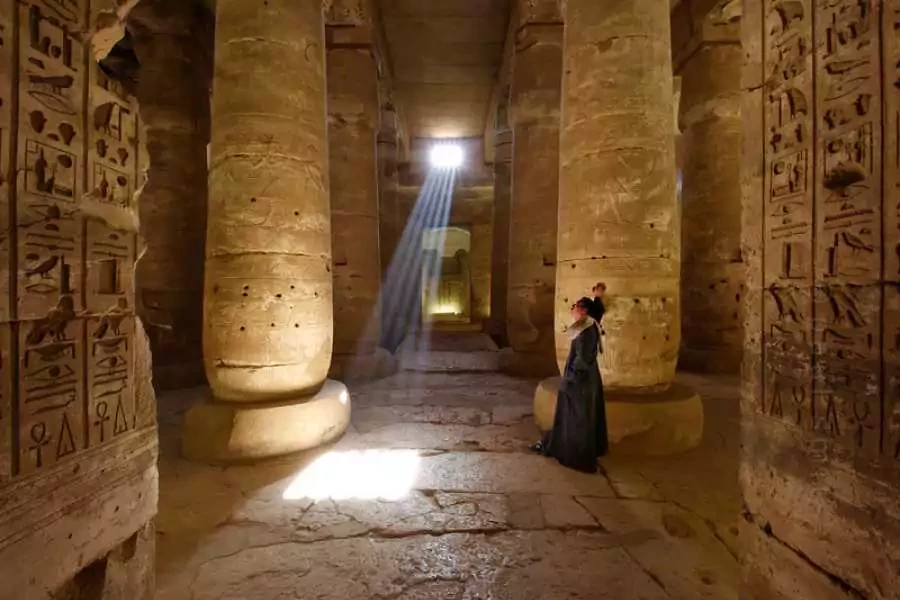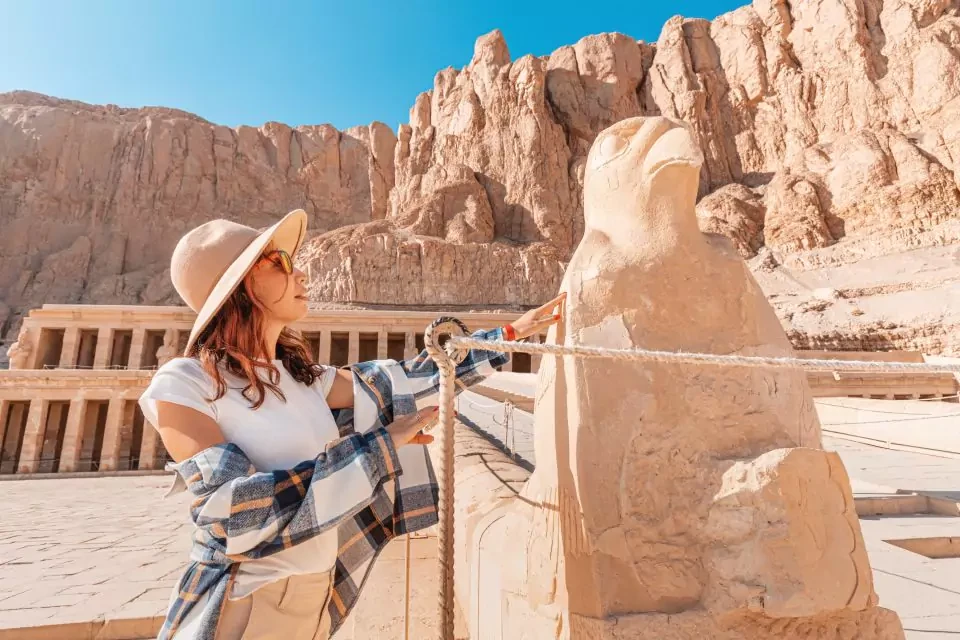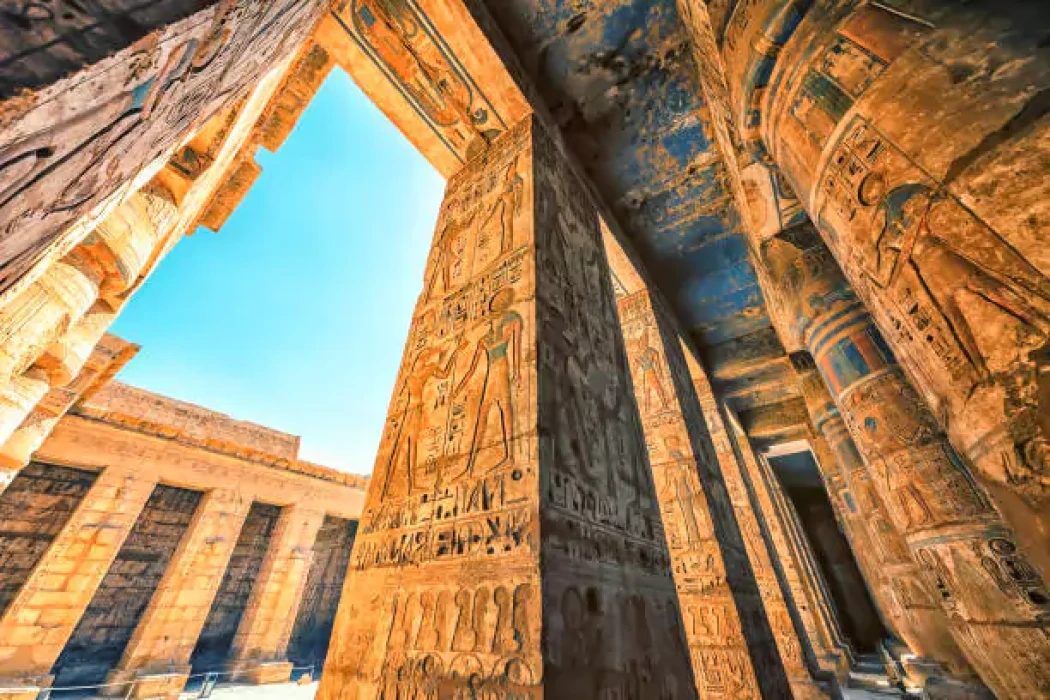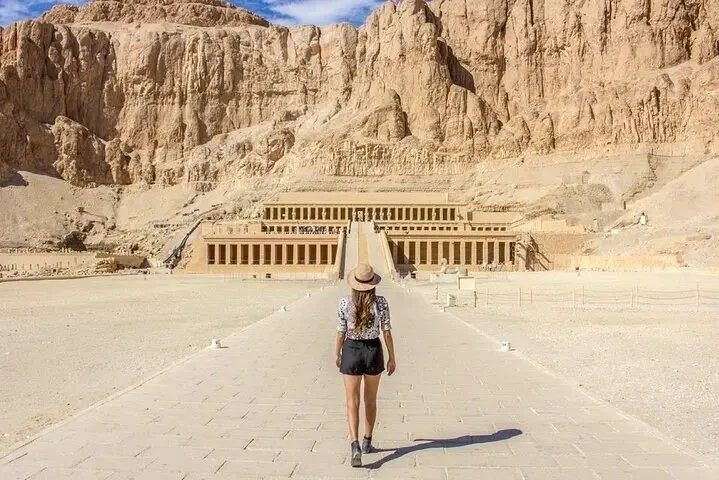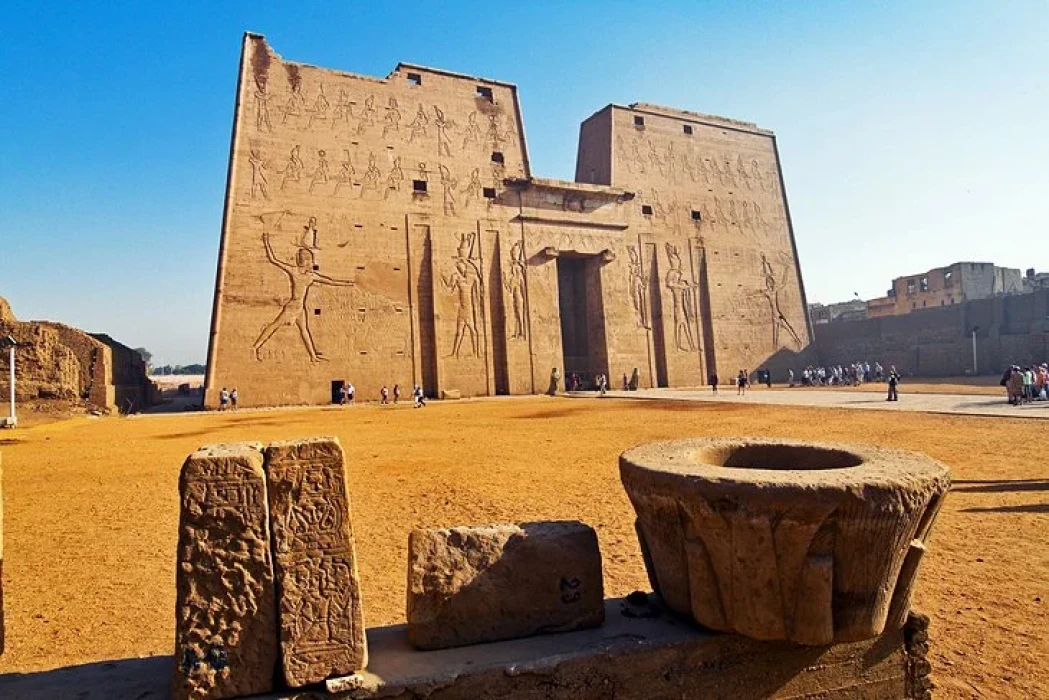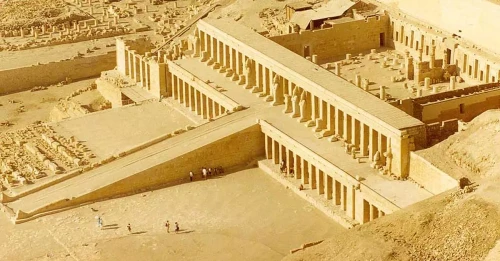
Settled against the transcending precipices of Deir el-Bahri, along the banks of the Nile in Luxor, Egypt, stands a building wonder that rises above time and makes a permanent imprint on history - the Morgue Sanctuary of Hatshepsut. This magnificent temple complex, which is dedicated to Queen Hatshepsut, one of Egypt's most mysterious and powerful pharaohs, is a reminder of the grandeur, artistic prowess, and lasting legacy of a remarkable woman. In this blog, published by Golavita Travel, we travel back in time and look at the fascinating Hatshepsut Mortuary Temple.
The Reign of Queen Hatshepsut
Queen Hatshepsut, born in the 15th century BCE, was a lady of unprecedented desire and vision. In a general public to a great extent overwhelmed by male pharaohs, she opposed show by rising to the high position of Egypt as its fifth pharaoh of the Eighteenth Dynasty. Her rule, traversing more than twenty years, was set apart by financial success, momentous engineering accomplishments, and conciliatory drives.
One of the most getting through traditions of Queen Hatshepsut's rule is the Funeral home Sanctuary at Deir el-Bahri, a design that mirrors her persevering through impact on Egyptian history.
Egypt experienced a period of stability and economic prosperity during Hatshepsut's rule. She started exchange endeavors to Dropkick (advanced Somalia), bringing back important merchandise like incense, myrrh, and intriguing creatures. These expeditions added value to Egypt and contributed to the development of diplomatic ties with other nations.
Her administration also saw significant construction projects, one of which was the Mortuary Temple at Deir el-Bahri. This temple was both a powerful representation of her connection to the divine and a testament to her rule.
The Design of Deir el-Bahri
The Mortuary Temple of Hatshepsut, otherwise called Djeser-Djeseru (signifying "the Blessed of Holies"), is viewed as one of the most amazing design accomplishments of old Egypt. Senenmut, an architect who served as a high-ranking official in Hatshepsut's court, was the one who created it.
The temple stands out from other temples of its time thanks to its distinctive design, which combines innovative features with elements of classical Egyptian architecture. It has three terraces connected by a grand central ramp that takes you to the sanctuary. Intricate reliefs and inscriptions embellish the temple's elegant colonnades, courtyards, and chapels, telling the tale of Hatshepsut's divine birth, reign, and sacrifices to the gods.
A Tribute to the Sun God Amun-Ra Amun-Ra, the sun god and chief deity of Egypt during the New Kingdom, was the primary deity worshiped at the Mortuary Temple of Hatshepsut. The sanctuary's engineering and format were intended to respect Amun-Ra and to sustain Hatshepsut's heavenly birth story.
The Hathor-headed columns in the Upper Terrace are one of the temple's most recognizable features. The goddess Hathor, who was associated with music, dance, and fertility, is depicted on these columns. Her presence in the sanctuary recommends an association among Hatshepsut and Hathor, underscoring the pharaoh's heavenly genealogy.
The Mysterious Mortuary Temple of Hatshepsut Although the Mortuary Temple of Hatshepsut bears witness to her reign, it also conceals mysteries that have baffled historians and archaeologists. The deliberate destruction of statues and reliefs of Hatshepsut is one of the most puzzling mysteries.
After her demise, her replacement, Thutmose III, started a mission to delete her inheritance from history. Numerous sculptures and engravings that included Hatshepsut were destroyed, and her name was frequently etched out. Questions about the reasons behind this deliberate erasure of her image, including possible political and dynastic motives, have surfaced.
The Mortuary Temple of Hatshepsut has been instrumental in resurrecting Hatshepsut's place in history, despite attempts to erase her legacy. Modern scholars have been able to piece together the story of her reign as well as her divine birth narrative thanks to the stunning architecture, inscriptions, and reliefs of the temple.
As of late, endeavors have been made to reestablish the sanctuary and protect its authentic and social importance. The continuous rebuilding work has uncovered new bits of knowledge into the sanctuary's development methods and the imagery inserted inside its engineering.
Visiting the Mortuary Temple of Hatshepsut
- Location: The Funeral home Temple of Hatshepsut is situated on the west bank of the Nile River in Luxor, close to the Valley of the Kings.
- When it opens: The sanctuary is for the most part open to guests during ordinary visiting hours. Checking the opening times and any extraordinary occasions or terminations in advance is fitting.
- Guided Tours: Guided Tours are accessible and enthusiastically suggested, as they give important bits of knowledge into the set of experiences, engineering, and meaning of the Temple.
Exploring the Temple Complex
Guests to the Funeral home Temple of Hatshepsut can explore its patios, yards, and houses of prayer, wondering about the flawless reliefs that decorate its walls. The temple gives visitors a once-in-a-lifetime chance to reconnect with Egypt's ancient past.
Don't forget to take the central ramp up to the Upper Terrace during your 2 Days in Luxor from Makadi Bay where you can see the Valley of the Kings in the distance and the surrounding landscape. It's a stunning vantage guide that adds toward the sanctuary's persona.
 English
English
 français
français
 español
español

